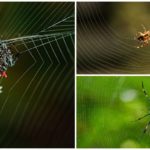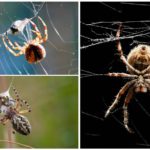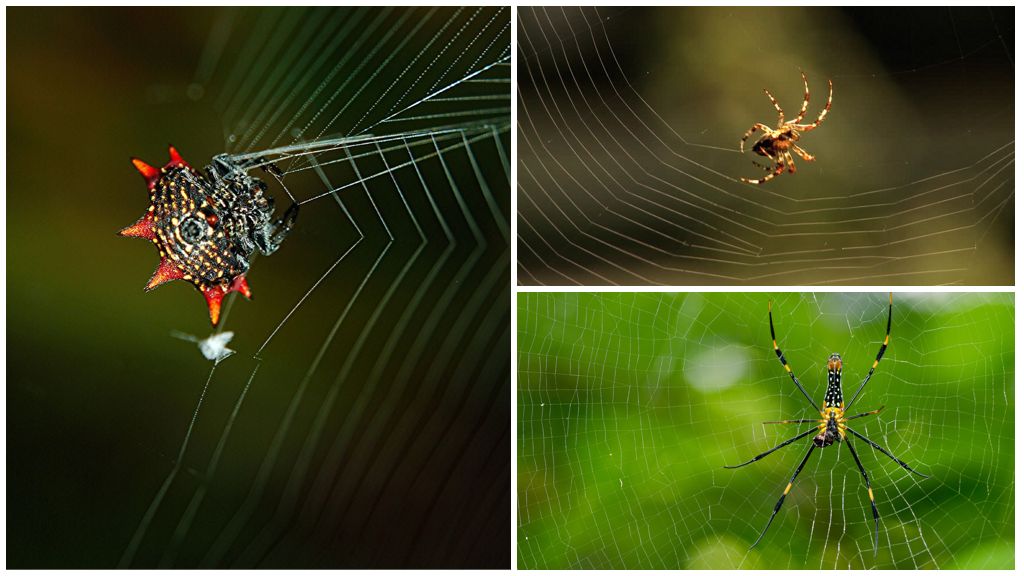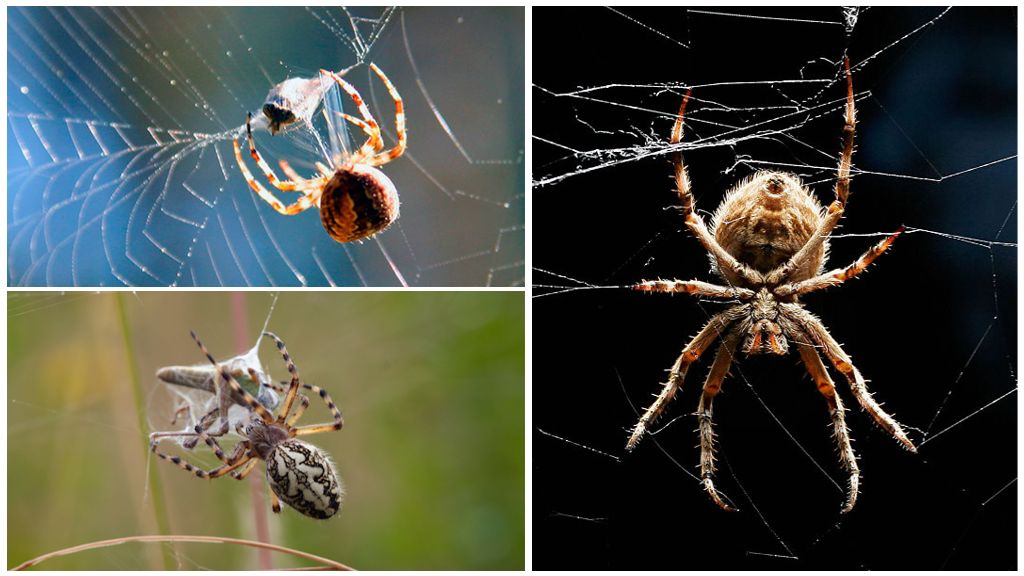As the spider weaves a web
Content
- Spider weaves a web
- Spider weaves a web
As the spider weaves a web, experts shot a video where you can see in detail the actions of the arthropod. The ability to weave lace fabric, funnel-shaped nets, cocoons for larvae is transmitted genetically. The young spider repeats all the actions of its mother, never seeing how it is done. Spiders make a web of different shape, size, structure, used for different purposes.
The composition of the web spider
It is the secret of the spider glands.After extraction it stretches, hardens in the form of thin threads. In the future, they are intertwined, made stronger. Used to form a pattern or as a building material.
What does the spider's web consist of - a protein enriched in alanine, serine, glycine. Inside the spider gland, the substance is in liquid form. In the process of passing through the spinning tube hardens, turns into a thread.
Where did the spider come from the web - from the warts located near the genitals. A crystalline protein is formed inside the yarn, which increases the strength and flexibility of the fibers. Depending on the purpose for which the web will be used, the thickness, strength changes.
Interesting!
The strength of the spider's web is close to nylon, it maintains tension under tension, and compression of the threads. A subject suspended on a long web can be rotated for a long time in one direction, it will not get confused, it will not even offer resistance when moving. Thanks to this feature, the spider can hang in the air for a long time, attaching the end to the plant, and also migrate over long distances using wind gusts.
Why does the spider weave a web - the main functions
The web does not stand out arbitrarily, but when the need arises. Different types of spiders use threads for different purposes, but absolutely all females use a special secret to attract males.
- If we carefully consider where the female spider is releasing from the web, you will notice that the warts with a secret are located near the genitals. Mature female additionally emits odorous substances, the smell of which catches the male.
- The family of orb-weaves traps the nets. The creation of large specimens in a radius reaches 2 m. The density of the canvas is such that it confuses a bird, a small rodent, amphibians. In the networks of representatives of our area entangled insects, their larvae.
- Soil, underground specimens build holes in the ground with numerous labyrinths. Dexterous nets do not construct, but they protect the entrance with cobwebs, and pull signal lines. By their vibrations they determine the approach of a potential victim, instantly go hunting.
- Spiders live apart, going in pairs only for mating. Possessions are divided, in violation of the borders mortal fights occur.For settling, mastering a new locality, the spider weaves a strong long thread, fastens it to a leaf, a twig, goes down, waits for a gust of wind. By air, an arthropod can fly several hundred kilometers or land under a nearby bush. Active migration begins after the birth of the younger generation of spiders.
- After fertilization, the female begins to form a cocoon from the web. Lays inward from 50 to 1000 eggs. It fixes in a secluded place or drags the whole period of development of the larvae.
- A strong arachnid builds a house for itself, a shelter for wintering. A unique creature - water spider, builds a nest under water. Initially, he weaves a house of threads, fills it with air, lives inside, lets the male in the mating season, hatches the young there, drags the caught victim inside.
- A predator web envelops its prey after injecting a toxin. After that, it leaves the prey, watches it aside, until the convulsions cease. If the predator is not hungry, hangs caught prey on the web in a secluded place in reserve.
- Some species of arthropods wring leaves in spiderwebs, draw a long thread, pull it to distract the attention of predators from their refuge. They make a puppet, which is then skillfully controlled.Another craftsmen from the improvised means weave a raft, float on the surface of the water, catch fry, larvae, crustaceans.
Spider webs trap leaves when insects cause significant damage to the threads. Starts to form a new canvas after 12 victims caught.
On a note!
The arthropod often eats his invention. This phenomenon is due to the replenishment of the body with protein, the presence of moisture, which accumulates on the canvas due to the dew.
How spider spider web
Many arachnids are nocturnal, engaged in "weaving" in the dark. How much a spider weaves a web depends on the variety of arthropod. On average, the orbrider takes about 1 hour to form robust trapping networks. If reconstruction is required, the process takes several minutes.
How quickly the spider weaves a web can be seen in the video below. It makes the arthropod automatically, each time repeating the same pattern. The most attractive are the openwork patterns of the orb-webbing. Initially, a strong web is taken, stretched in the shape of a triangle, then cells of different sizes are formed.
Interesting!
The cobweb of the Brazilian rainforest is so strong that it is used by local fishermen to catch fish. From the threads weave a thin, but very durable canvas. The Kraig Biocraft company makes spider bulletproof vests from natural raw materials.
As the spider weaves a web between trees, you can see it in the garden, in the wild. Openwork canvas or funnel sparkles in the sun, attracts insects. But the process itself, as the spider pulls the web between two trees, deserves admiration. Initially, the predator descends, waits for a gust of wind, moves through the air to a nearby tree, fixes the second end there. Then it remains for small.
During the flight, the spider controls the speed by adjusting the length of the thread. When lengthening moves more slowly, while reducing - faster. To land, you need to throw a web on a plant, a tree.









